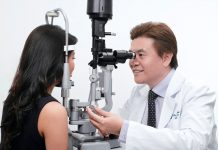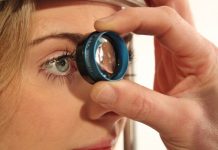Are you experiencing blurred vision at near points, such as reading or working at computer? There’s nothing to worry about, it happens to every one at some point in life.
This particular blurred vision at near points is commonly referred as Presbyopia.
Presbyopia is the part of natural aging process of your eye. As you approach middle age, the lens present in your eyes begins to thicken and loses their flexibility.
When this happens, the ability of your eye’s lens to bend in order to focus on objects at varying distances will be lost. As a result, you can experience blurred vision at near points.
Do you think presbyopia and farsightedness both are same?
When you develop presbyopia, you’ll find that you need to hold things such as books, newspapers, menu cards and many other objects at arms’ length in order to focus on them properly. More often, presbyopia is confused with farsightedness(hyperopia).
But, do you know that both are entirely different? Presbyopia mainly occurs when eye’s lens loses its natural flexibility where as farsightedness occurs as a result of the changes in shape of eyeball, which causes the light rays to bend improperly, once they’ve entered into eye.
Is there any treatment for presbyopia?
There is no permanent cure for this kind of blurred vision. But, if you want to improve the quality of vision, your doctor can recommend wearing eye glasses.
Eye glasses with bifocal or progressive addition lenses are the most common corrections available for this kind of vision problem.
Even, reading glasses are another option available for you. Unlike bifocal lenses and progressive addition lenses, reading glasses can be typically worn just during your close work.
Mono-vision contact lens is also other option available for you, if you have problem with only one eye. You can wear contact lens for distance vision in your dominant eye and a contact lens for close up vision in your non-dominant eye.
You can also make a little modification for these mono-vision contacts, which is commonly known as modified mono-vision contacts.
With modified mono-vision contacts, you can wear a bifocal contact lens in your non-dominant eye and a contact lens for dominant eye. With this option, you can use your both eyes for distance and one eye for reading.
But, don’t worry, you don’t have to consciously think which eye to choose. Your brain will gradually learn which lens to favor depending on the condition.
So, try to know which option suits you more and make a wise choice in selecting glasses for your eyes.














